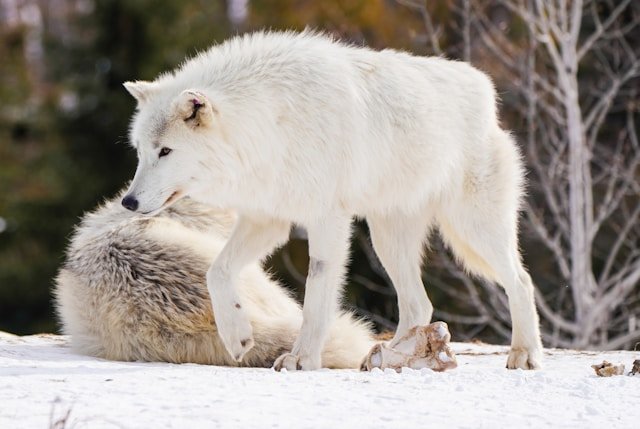Three lab-bred pups with dire wolf DNA have been born — but scientists warn they’re no true resurrection, just an impressive genetic imitation
They’ve been named Romulus, Remus, and Khaleesi — but these new arrivals aren’t characters from ancient legend or fantasy fiction. They’re the world’s first “pseudo-dire wolves,” lab-created canines engineered by US biotech firm Colossal to resemble the long-extinct predators that last roamed North America over 10,000 years ago. The result is headline-grabbing — but far from a genuine resurrection.
The trio, bred from genetically modified embryos and delivered by domestic dog surrogates, are the outcome of a sophisticated experiment in synthetic biology. The science is impressive: ancient DNA was painstakingly extracted from dire wolf remains, including a 13,000-year-old tooth and a 72,000-year-old ear bone. Researchers sequenced the genome and pinpointed around 20 key genetic markers — single nucleotide polymorphisms (SNPs) — that they believed contributed to the dire wolf’s massive build and distinctive appearance.
These SNPs were then inserted into the genome of a gray wolf using CRISPR-Cas9, a highly precise gene-editing tool. The resulting pups were born with pale coats, broader shoulders, and heavier builds — features associated with dire wolves, at least from what little we know of them from fossil records.
Yet despite the visual resemblance, scientists say these are not real dire wolves — not even close.
“Changing 20 out of billions of base pairs is like repainting a car and calling it a different model,” explains Dr Timothy Hearn, a senior lecturer in bioinformatics at Anglia Ruskin University. “It may look the part from afar, but under the bonnet, it’s a different beast entirely.”
The dire wolf and the modern gray wolf split evolutionarily over 300,000 years ago. While they appear similar, they diverged genetically far earlier. For perspective, humans and chimpanzees share 98.8% of their DNA — but the behavioural and cognitive differences are vast. The actual genetic gulf between a dire wolf and a gray wolf likely dwarfs that. So, editing a handful of genes doesn’t recreate the ancient predator — it merely sculpts a mimic.
Embed from Getty ImagesStill, the achievement is groundbreaking. From ancient DNA sequencing to CRISPR editing and live animal births, each step showcases the power of modern genetic engineering. And such tools have potential benefits beyond showy revivals — particularly in conservation. Scientists hope similar techniques could one day bolster genetic diversity in endangered species or combat inbreeding in struggling populations.
But not everyone is sold on the idea.
Critics argue the money and effort invested in pseudo-resurrections like this could be better spent protecting living ecosystems and preventing today’s species from becoming tomorrow’s fossils. Reintroducing engineered animals into the wild, even on fenced reserves, also risks disrupting delicate ecological balances.
Colossal insists the three pups are being kept in a secure, expansive 2,000-acre reserve at a secret location, with no immediate plans to release them more widely. For now, they remain a scientific marvel — and a powerful symbol of how far synthetic biology has come.
But the larger question remains: just because we can do it, should we? Recreating the appearance of the past may dazzle headlines and tap into our nostalgia for lost wilderness, but it’s no substitute for genuine biodiversity.
In the end, this isn’t about resurrecting the dead. It’s about exploring the limits of what living science can create — and deciding how wisely we wield that power.
